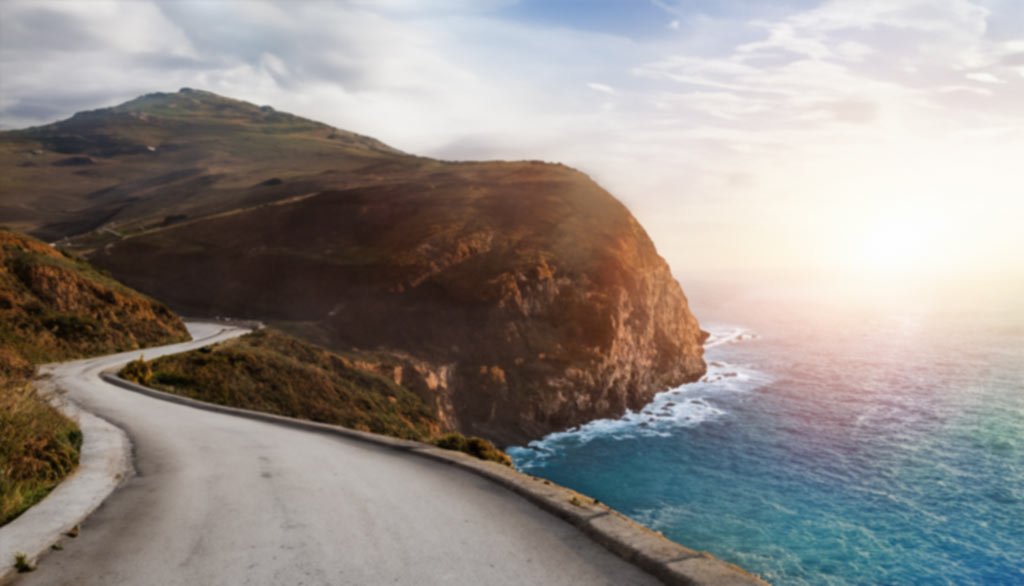Agiofarago Beach is a remote beach located at the end of the Agiofarago Gorge, 74.2 kilometers (46.12 miles) south of Heraklion on the Greek island of Crete. The beach is accessible by hiking through the gorge, which takes 30 to 50 minutes, or by catching a boat from nearby ports like Matala, Agia Galini, or Kali Limenes. The area has a rich history dating back to early Christian times when it served as a center of ascetic life, with around 300 hermits living in isolation within the gorge’s caves. In the 14th century, the church of Agios Antonios (St. Anthony) was built, and it remains standing today, along with a well that once supplied water to the hermits.
The climate in Agiofarago Beach is typical of the Mediterranean region, with hot, dry summers and mild winters. Summer temperatures can reach 30°C (86°F) to 40°C (104°F), making early morning or late afternoon visits more comfortable. Winter temperatures are generally milder, ranging from 10°C (50°F) to 20°C (68°F). Due to the rugged terrain and the need to hike through the gorge or access the beach by boat, a 4×4 vehicle or a vehicle with good ground clearance is recommended for reaching the parking area near the gorge entrance, but keep in mind that vehicles are not allowed on the beach, and visitors must park and hike the remaining distance.

What is Agiofarago Beach?
Agiofarago Beach is a secluded pebble beach located 74.2 kilometers (46.12 miles) south of Heraklion at the end of the Agiofarago Gorge. It features crystal-clear blue waters, usually calm, and is surrounded by towering vertical cliffs. A distinctive rocky arch formation can be found on the western side of the beach, allowing visitors to swim underneath. Agiofarago Beach is characterized by its remote location. It is accessible only by hiking through the Agiofarago Gorge for 30 to 50 minutes or by boat from nearby ports. The beach lacks amenities and facilities, making it an ideal destination for those seeking solitude and a natural, unspoiled environment. Swimming, snorkeling, and rock climbing are popular activities in the area.
The name “Agiofarago” translates to “Gorge of the Saints” or “Holy Gorge,” reflecting the area’s historical significance as a center of ascetic life. According to legend, around 300 hermits lived in isolation within the gorge’s caves during early Christian times, meeting annually at a large cave called “Goumenospilios.” Agiofarago’s history dates back to the 14th century when the church of Agios Antonios (St. Anthony) was built near the beach, becoming the center of the area’s asceticism. A well outside the church provided water to the hermits. A Minoan tomb discovered south of the church highlights human presence in the region from as early as 2000 BCE.
Where is Agiofarago Beach located?
Agiofarago Beach is on the southern coast of the Greek island of Crete, 74.2 kilometers (46.12 miles) south of Heraklion. It lies at the end of the Agiofarago Gorge, in the municipality of Mires, within the regional unit of Heraklion. The nearest major airport to Agiofarago Beach is Heraklion International Airport, which is 74.8 kilometers (46.49 miles) away. This airport is the primary gateway to Crete and offers connections to various domestic and international destinations. Agiofarago Beach’s coordinates are 34°55’32.1″N 24°46’42.1″E. These coordinates pinpoint the beach’s location at the mouth of the Agiofarago Gorge, where it meets the Libyan Sea on the southern coast of Crete.
How does the Agiofarago Beach Map look?
Find below is an image with a map of the Agiofarago Beach.

What are the activities in Agiofarago Beach?
The activities in Agiofarago Beach are snorkeling, swimming, rock climbing, and hiking. Firstly, the beach’s crystal-clear waters and the surrounding marine environment make it an ideal spot for snorkeling. Visitors can expect to encounter diverse marine life and underwater rock formations while exploring the area. Secondly, the calm, blue waters of Agiofarago Beach provide excellent conditions for swimming. Visitors can take a refreshing dip in the sea or swim beneath the distinctive rocky arch formation on the western side of the beach. Thirdly, Agiofarago Beach and the surrounding gorge are popular destinations for rock climbing lovers. The towering vertical cliffs and unique rock formations offer numerous routes for climbers of various skill levels, from beginner to advanced. Lastly, visitors can hike along the Agiofarago Gorge, explore the nearby caves once inhabited by hermits, and visit the historic church of Agios Antonios (St. Anthony) with its well. The beach is suitable for sunbathing and relaxing, providing a serene escape from the crowds, but it is important to note that the beach lacks basic amenities, so visitors should come prepared with food, water, and essential supplies.
What is Agiofarago Gorge?
Agiofarago Gorge is a scenic natural gorge located in the southern part of Crete, Greece, 74 kilometers south of Heraklion. The name “Agiofarago” literally means “Gorge of the Saints”, reflecting its historical significance as a place of spiritual retreat.
To reach Agiofarago Gorge, visitors short will need to do a short and easy 1.5-kilometer hike through the gorge to Agiofarago Beach. The Church of Agios Antonios (St. Anthony) is located near the end of the gorge. There is a natural rock arch formation near the beach, which visitors can swim under. Visitors should bring water, supplies, and appropriate footwear, as the area lacks modern amenities.
When is the best time to visit Agiofarago Beach?
The best time to visit Agiofarago Beach is during the spring months of April and May. Temperatures during these months range from 15°C (59°F) to 25°C (77°F), providing comfortable conditions for hiking, swimming, and other outdoor activities. The autumn months of September and October are also favorable for visiting the beach. Through temperatures between 20°C (68°F) to 30°C (86°F) and fewer crowds, visitors can enjoy a more serene and peaceful experience at Agiofarago.
Visitors who prefer to avoid the peak summer heat and crowds consider visiting Agiofarago Beach during the winter months of November to March. Temperatures can be cooler, ranging from 10°C (50°F) to 20°C (68°F), the lack of visitors can make for a more intimate and secluded experience. Agiofarago Beach is less crowded during winter, particularly from November to February. This period sees fewer tourists visiting Crete, allowing for a more relaxed and uncrowded visit to the beach and the surrounding area, but visitors should be prepared for cooler temperatures and the possibility of inclement weather during the winter season.
How is the preservation of Agiofarago Beach?
Agiofarago Beach and the surrounding area are part of the Agiofarago Martsalo Kefali protected area, managed by the regional authority of Crete. This designation preserves the natural environment and maintains the region’s ecological balance. Specific measures regulate human activities to minimize their impact. Limiting visitor access is a primary preservation method, with the beach’s remote location and requirement to hike through the gorge or arrive by boat naturally reducing visitor numbers. Camping and nudism are prohibited to respect the site’s religious significance and protect the natural habitat. Educational initiatives and signage promote responsible tourism, encouraging visitors to follow “Leave No Trace” principles. Regular monitoring and cleanup efforts by local authorities and volunteers help maintain the beach’s pristine condition.
What are nearby attractions in Agiofarago Beach?
Listed below are the nearby attractions in Agiofarago Beach:
- Saint Anthony Church at Agiofarago: The Saint Anthony Church is a historic religious site 500 meters (1640.5 feet) from Agiofarago Beach. Visitors can explore this church in rugged landscapes and learn about its significance in local culture and tradition. The church offers a serene atmosphere for quiet reflection and is often visited by pilgrims seeking spiritual solace. Guests can admire traditional Orthodox Christian iconography and architecture dating back centuries.
- Goumenospilios Cave: Goumenospilios Cave is an intriguing natural wonder close to Agiofarago Beach, 350 meters (1148.35 feet) away. Adventurous visitors can take a short hike to the cave entrance to explore its cavernous interior filled with fascinating rock formations and stalactites. The cave is also believed to have historical significance, with evidence of human habitation dating back thousands of years. Exploring Goumenospilios Cave offers an exciting opportunity to witness the wonders of nature’s geological processes up close.
- Agiofarago Gorge: Agiofarago Gorge is a scenic canyon near Agiofarago Beach, 12.5 kilometers (7.77 miles) away. Nature lovers can hike through the gorge, surrounded by cliffs and vegetation. The trail offers landscape views and leads to a secluded beach at the end, where visitors can relax and soak in the relaxed ambiance. Agiofarago Gorge provides a unique opportunity to experience the natural beauty of Crete’s terrain.
- Vathi Beach: Vathi Beach is a pristine coastal paradise near Agiofarago Beach, 16.2 kilometers (10.07 miles) away. Visitors can enjoy a leisurely drive or hike to reach this secluded beach with crystal-clear waters and soft golden sands. Vathi Beach is ideal for sunbathing, swimming, and snorkeling in the calm, turquoise sea. The surrounding cliffs offer shelter from the wind, creating a peaceful spot for beachgoers to unwind and enjoy the beauty of nature.
- Martsalo Beach: Martsalo Beach is a hidden gem located 13.9 kilometers (8.64 miles) from Agiofarago Beach. Accessible via a scenic hike or boat trip, this secluded beach is known for its breathtaking beauty and pristine natural surroundings. Visitors can lay in the sun on the soft sandy shores or explore the nearby caves and rocky cliffs. Martsalo Beach offers a relaxed escape from the crowds, allowing guests to reconnect with nature in a coastal setting.

How do you get to Agiofarago Beach?
Visitors can reach Agiofarago Beach by hiking, boat, car, or a combination of public transportation, taxi, and hiking.
- Hiking: The most popular and recommended option is hiking through the Agiofarago Gorge. Starting from the parking area near the Odigitria Monastery, visitors embark on a 30 to 50-minute hike along the gorge, passing caves, the church of Agios Antonios, and striking rock formations before reaching the beach.
- Boat Trip: Another option is taking a boat from nearby ports like Matala, Agia Galini, or Kali Limenes. These excursions typically include a stop at Agiofarago Beach, offering a scenic seaside journey. Boat trips generally range from €20 ($21.8, £17.4) to €40 ($43.6, £34.8) per person, depending on duration and services.
- Driving: For those who prefer driving, it’s possible to reach the parking area near the gorge entrance by following a dirt road from the Odigitria Monastery. A 4×4 vehicle or one with good ground clearance is recommended due to the rugged terrain.
- Public Transportation and Taxi: Public transportation options are limited, but visitors can take a bus from Heraklion to Mires and then hire a taxi to the Odigitria Monastery or Kali Limenes. From there, they can either hike or take a boat. Taxi fares from Mires typically range from €25 ($27.25, £21.75) to €40 ($43.6, £34.8) one way, depending on negotiation.
Getting to Agiofarago Beach by Car
The best and cheapest way to get to Agiofarago is by hiring a car in Heraklion. You’ll need to drive to Messara and continue past Sivas Village until you reach Odigitria Monastery. Take a left from the dirt road towards the port of Kali Limenes. After about 4 km, you should be able to see a sign that says Agiofarago beach.

You’ll know it’s the right place once you hit a dead end. Park your car in an unshaded spot (goats and birds tend to jump on cars to reach the leaves of overhead trees) and continue on foot into the gorge.
Getting to Agiofarago Beach by Bus
There is a bus route that you can take from Heraklion to Mires. Once you get to Mires, take a taxi to Kali Limenes. Finding a taxi to take you back to Heraklion won’t be easy, so renting a car to get around makes the most sense.
Getting to Agiofarago Beach by Taxi
Taking a taxi in Crete can be an expensive affair. In particular, finding one that will agree to take you to Agiofarago will be tricky since the area is quite secluded. It’s best to book a rental car to the beach since there’s parking on site.
What are the factors to consider before renting a car in Crete?
Listed below are the factors to consider before renting a car in Crete:
- Insurance: Before reserving a car rental in Crete, it is important to consider insurance coverage. Check if the rental company provides comprehensive insurance that covers damages, theft, and liability. It is recommended that the terms and conditions of the insurance policy be carefully reviewed to understand the coverage and any additional costs or deductibles involved.
- Driver’s Age: Some car rental companies may have age restrictions or additional fees for drivers under a certain age. Verify the minimum age requirement and any surcharges that may apply.
- Driver’s Gender: Certain rental companies may have specific policies regarding male or female drivers, so it is essential to check if there are any gender restrictions or additional requirements.
- Car Type: Consider the type of car that suits the needs and preferences. Determine the size, features, and specifications required for the trip. Whether one needs a compact car for easy maneuverability or a larger vehicle for more space, selecting the right car type will ensure a comfortable and convenient experience.
- Documents needed for renting a car: Ensure all necessary documents are available for the car rental. This includes a valid driver’s license, passport or identification, and a credit card for the reservation and security deposit. Check the rental company’s specific requirements to avoid any last-minute complications.

How much does a car rental in Crete cost?
Car rental in Crete costs vary depending on the number of passengers, itinerary, car type, location, and duration. The average price of renting a vehicle in Crete is €30 ($32.7, £26.1) to €40 ($43.6, £34.8) per day. A car rented for a whole week will cost an average of €250 ($272.5, £217.5), while renting for the weekend will cost €78 ($85.02, £67.86). Affordable car rentals in Rental Center Crete vary depending on the car type.
How much does it cost to get to Agiofarago Beach?
There is no admission fee for visitors to access Agiofarago Beach. Getting to the beach is free, whether they hike through the Agiofarago Gorge or take a boat from nearby ports, but transportation costs may apply depending on the chosen mode of travel. If visitors plan to drive to the parking area near the gorge entrance, they will not encounter any parking fees. The parking area is a simple, unpaved lot, and visitors can leave their vehicles there at no cost, but they need to exercise caution and avoid parking under trees, as the local goats may climb onto their cars to reach the leaves. Agiofarago Beach is a remote and undeveloped area with no facilities or vendors present for visitors. There are no food options available for purchase at the beach. Visitors are advised to bring food, water, and other necessary supplies, as no refreshment stands or restaurants are nearby.
Where to stay near Agiofarago Beach?
Listed below are the best hotels to stay near Agiofarago Beach:
- Karampinis: Karampinis is a family-run hotel known for its warm hospitality and great atmosphere. The hotel features comfortable rooms with simple furnishings and essential amenities, including free Wi-Fi and satellite TV. Guests can relax in the hotel’s garden courtyard or enjoy a drink at the onsite bar. Karampinis is 3.7 kilometers (2.3 miles) from Agiofarago Beach, making it a convenient choice for beach lovers. Prices start at €40 ($43.6, £34.8) per night for a standard double room.
- Kyma Home Studios: Kyma Home Studios offers comfortable accommodations 1.9 kilometers (1.18 miles) from Agiofarago Beach. This property features cozy studio apartments with modern amenities, including fully equipped kitchens and private balconies overlooking the sea. Guests can enjoy complimentary Wi-Fi access and on-site parking facilities during their stay. A studio apartment at Kyma Home Studios costs €50 ($54.5, £43.5) per night.
- Theaktis – Filia 1&2: Theaktis – Filia 1&2 provides guesthouses close to Agiofarago Beach, 2 kilometers (1.24 miles) away. These traditional stone-built accommodations offer a rustic ambiance with comfortable furnishings and scenic views of the surrounding countryside. Guests can relax in the communal garden or prepare meals in the shared kitchen facilities. Rates for a guesthouse at Theaktis – Filia 1&2 start at €70 ($76.3, £60.9) per night.
- The Eagle: The Eagle is a boutique hotel located 2.1 kilometers (1.31 miles) from Agiofarago Beach. This stylish hotel features elegant rooms with modern decor and luxurious amenities, including plush bedding and spacious bathrooms. Guests can enjoy a complimentary breakfast served daily and access to a rooftop terrace with panoramic views of the coastline. Prices for a room at The Eagle start at €90 ($98.1, £78.3) per night.
- Theaktis Homes – One-Bedroom House: Theaktis Homes offers cozy one-bedroom houses 2 kilometers (1.24 miles) from Agiofarago Beach. These traditional stone houses feature authentic Cretan architecture and are equipped with all the comforts of home, including fully equipped kitchens and private outdoor seating areas. Guests can take advantage of the barbecue facilities and enjoy al fresco dining in the Mediterranean garden. Rates for a one-bedroom house at Theaktis Homes start at €80 ($87.2, £69.6) per night.
Where to eat near Agiofarago Beach?
Listed below are the best places to eat near Agiofarago Beach:
- Kuna Muta: Kuna Muta is a cozy restaurant near Agiofarago Beach, 1.4 kilometers (0.87 miles) away. This family-owned establishment specializes in traditional Cretan cuisine, offering a menu filled with fresh seafood dishes and grilled meats. Guests can savor local specialties like grilled octopus, seafood pasta, and lamb kleftiko in a casual dining atmosphere. Prices at Kuna Muta typically range from €15 ($16.35, £13.05) to €25 ($27.25, £21.75) per person for a meal.
- Bistronomy Matala: Bistronomy Matala is a chic bistro 20.7 kilometers (12.87 miles) from Agiofarago Beach. This trendy restaurant combines traditional Greek flavors with modern culinary techniques, offering a diverse menu of Mediterranean-inspired dishes. Guests can enjoy Greek salad with feta cheese, grilled halloumi, moussaka, and local wines and cocktails. Prices at Bistronomy Matala range from €20 ($21.8, £17.4) to €35 ($38.15, £30.45) per person for a meal.
- George’s Yard: George’s Yard is a taverna 20.9 kilometers (12.99 miles) away from Agiofarago Beach. This family-friendly restaurant serves classic Greek comfort food, including souvlaki, gyros, and spanakopita, in a relaxed garden setting. Guests can dine al fresco surrounded by greenery and enjoy live music performances on select evenings. Prices at George’s Yard are budget-friendly, with meals typically costing between €10 ($10.9, £8.7) to €20 ($21.8, £17.4) per person.
- SCALA Fish Bar Restaurant & Hotel Boutique: SCALA Fish Bar Restaurant & Hotel Boutique is a waterfront dining destination 21 kilometers (13.05 miles) from Agiofarago Beach. This upscale restaurant specializes in freshly caught seafood dishes, including grilled fish, seafood risotto, and shrimp saganaki, with panoramic sea views. Guests can also choose from premium wines and cocktails to complement their meals. Prices at SCALA Fish Bar Restaurant & Hotel Boutique range from €30 ($32.7, £26.1) to €50 ($54.5, £43.5) per person for a meal.
- Delfinia Zaharias: Delfinia Zaharias is a traditional Greek taverna 19.7 kilometers (12.24 miles) from Agiofarago Beach. This family-run restaurant offers a warm and welcoming atmosphere, serving authentic Greek dishes made with locally sourced ingredients. Guests can indulge in specialties such as moussaka, stuffed grape leaves, and grilled fish, accompanied by homemade wine or ouzo. Prices at Delfinia Zaharias are affordable, with meals typically ranging from €15 ($16.35, £13.05) to €25 ($27.25, £21.75) per person.
Is Agiofarago Beach worth visiting?
Yes, Agiofarago Beach is worth visiting. The beach offers a rare opportunity to engage in a natural and relatively untouched environment. The remote location and the effort required to access the beach, whether by hiking through the Agiofarago Gorge or taking a boat, add to the sense of adventure and exclusivity. Visitors can escape the crowds and enjoy a serene atmosphere while engaging in activities including swimming, snorkeling, rock climbing, and exploring nearby caves and historical sites. The lack of amenities and facilities allows a more authentic and intimate connection with nature.

Is Agiofarago Beach safe?
Yes, Agiofarago Beach is safe. The beach is located in a remote area, far from populated regions, which minimizes the risk of crime or disturbances. The fact that access is limited to hiking through the gorge or arriving by boat helps control the number of visitors and maintains a more controlled environment, but visitors should exercise caution when exploring the area, especially when hiking through the Agiofarago Gorge or climbing the surrounding cliffs. Proper hiking gear, including sturdy shoes and protective equipment, is recommended to prevent accidents or injuries. There are no lifeguards or medical facilities on site, and visitors should be mindful of their swimming abilities and avoid taking unnecessary risks in the water.
Do you need to book in advance to visit Agiofarago Beach?
No, visitors do not need to book in advance to visit Agiofarago Beach. The beach is part of a protected natural area, and access is open to the public without any prior reservation or booking requirements. Visitors can simply arrive at the designated parking area near the Odigitria Monastery or one of the nearby ports and proceed to the beach through the gorge or by boat. There are no organized tours or guided activities that require reservations. Visitors are free to explore the area at their own pace and schedule, but it is advisable to plan the visit, particularly if one intends to take a boat from one of the nearby ports, as availability may be limited during peak seasons or certain times of the day.
Are children permitted at Agiofarago Beach?
Yes, children are permitted at Agiofarago Beach. The beach and the surrounding area are part of a protected natural environment, but there are no restrictions prohibiting the presence of children. It is important to note that the journey to the beach, whether through the Agiofarago Gorge or by boat, may be challenging for younger children or those with limited mobility. The hike through the gorge, which takes 30 to 50 minutes, involves navigating uneven terrain and rocky paths, which may prove difficult for small children. The beach lacks amenities such as restrooms, changing facilities, or playgrounds, which could be inconvenient for families with young children. Parents or guardians should exercise caution and ensure that children are supervised properly, as the area lacks lifeguards or other safety measures typically found at more developed beaches.
Last updated on .









